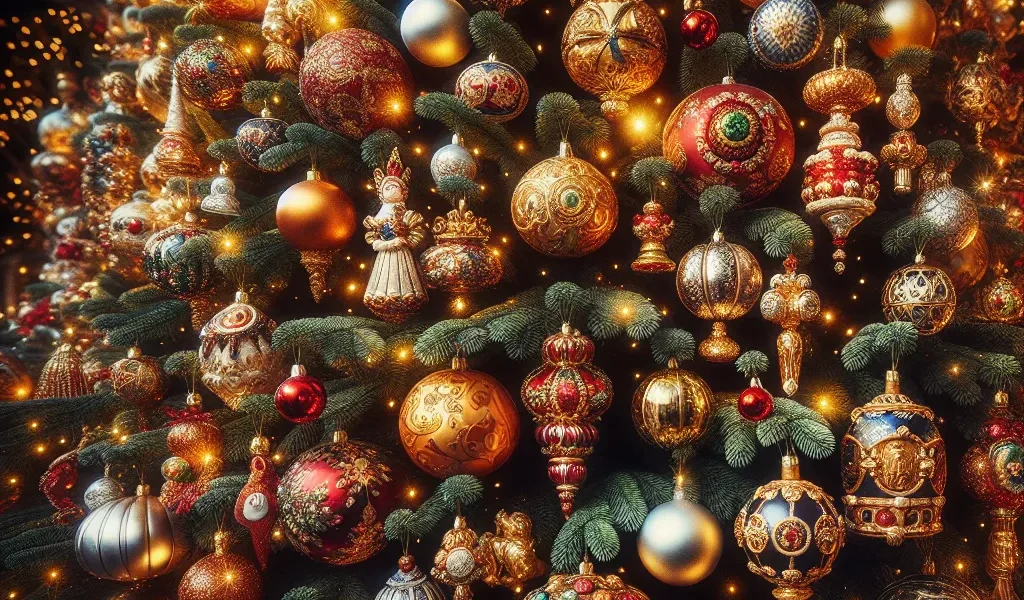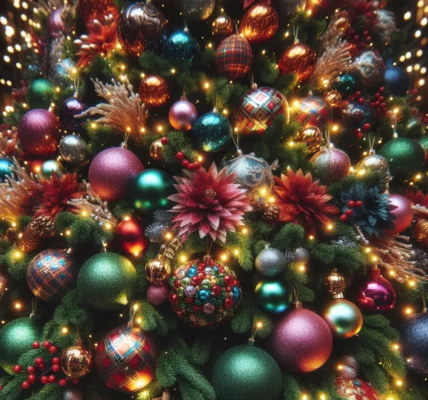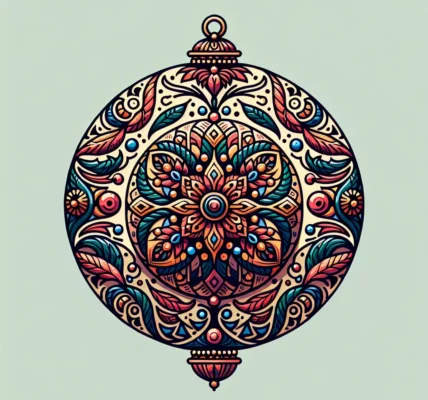The Origins of Baubles in Holiday Decor
When it comes to holiday decor, one iconic element that instantly comes to mind is the bauble. These colorful and shiny ornaments have become a staple in decorating Christmas trees and adorning homes during the festive season. But have you ever wondered about the origins of baubles in holiday decor? The history of baubles can be traced back to 16th century Germany, where they were originally crafted out of blown glass and hand-painted. These early baubles were inspired by the tradition of decorating trees with fruits and nuts. However, it wasn’t until the 19th century when the popularity of baubles soared, thanks to the influence of Queen Victoria and Prince Albert, who popularized the Christmas tree tradition in England. This led to the mass production and widespread use of baubles in holiday decor, solidifying their significance in festive celebrations.
Evolution of Baubles Through History
When it comes to holiday decorations, baubles play a significant role in adding sparkle and color to festive settings. The history of baubles dates back to ancient times, with the evolution of these ornaments reflecting the changing cultural and artistic trends over the centuries.
Originally, baubles were simple, natural objects such as fruits, nuts, and candles, used to adorn evergreen branches during winter solstice celebrations. In the 16th century, the tradition of decorating Christmas trees with baubles became popular in Germany, using items like handmade glass ornaments, sweets, and small trinkets.
The industrial revolution in the 19th century brought mass production of glass baubles, making them more accessible and affordable. This era saw the introduction of intricate designs and vibrant colors, shaping the modern concept of baubles as we know them today.
Furthermore, the art nouveau and art deco movements of the early 20th century influenced bauble designs, incorporating geometric patterns and nature-inspired motifs. In recent times, the diversity of baubles has expanded to include various materials such as plastic, fabric, and even recycled components, reflecting a growing environmental consciousness.
As baubles continue to evolve, they remain an essential part of holiday décor, symbolizing joy, togetherness, and the timeless tradition of celebrating festive occasions.
Symbolism and Cultural Significance of Baubles
The use of baubles in holiday decor has a rich history that spans across different cultures and time periods. These small, decorative ornaments have significant symbolism and cultural importance in various traditions around the world.
Baubles are often associated with Christmas and are commonly used to adorn Christmas trees. The tradition of decorating trees with baubles can be traced back to 16th century Germany, where people would hang fruits and nuts on trees as a way to celebrate the holiday season. Over time, these natural ornaments evolved into the colorful, glass baubles that we use today.
In many cultures, baubles are seen as a symbol of good luck, prosperity, and hope for the future. The round shape of the bauble is often associated with unity and completeness, making it a powerful symbol of togetherness and the cyclical nature of life.
Different cultures have their own unique interpretations of baubles. In some Asian cultures, red baubles are used to symbolize joy and happiness, while in Western cultures, gold and silver baubles are often associated with wealth and prosperity.
Baubles also hold religious significance in many traditions. In Christianity, the use of baubles to decorate Christmas trees is often seen as a way to symbolize the light of Christ shining in the world.
Overall, baubles play a significant role in holiday decor, serving as a reminder of cultural traditions, religious symbolism, and the universal themes of hope and unity. Their diverse cultural significance makes baubles a cherished and timeless addition to festive celebrations around the world.
Modern Trends and Innovations in Bauble Decor
Modern trends and innovations have revolutionized the way baubles are incorporated into holiday decor. In recent years, there has been a significant shift towards eco-friendly and sustainable baubles, reflecting a growing concern for the environment. Manufacturers are now producing baubles made from recycled materials, such as glass, metal, and even ocean plastic, presenting consumers with stylish and environmentally conscious options.
Moreover, technology has also played a transformative role in bauble decor. LED bauble lights have gained popularity for their energy efficiency and vibrant illumination, offering a modern twist to traditional bauble decorations. Additionally, smart baubles equipped with programmable LED lights and wireless connectivity have emerged, allowing users to create personalized lighting displays and synchronized effects, enhancing the overall holiday ambiance.
Furthermore, the rise of personalized and artisanal baubles has added a touch of individuality to holiday decor. Customizable baubles, featuring names, meaningful dates, or intricate designs, have become sought-after items, allowing individuals to express their unique style and create cherished mementos for years to come. Artisanal baubles crafted by skilled artisans have also gained appreciation for their craftsmanship and attention to detail, elevating the artistic value of holiday decorations.
In conclusion, modern trends and innovations in bauble decor have not only introduced eco-friendly and technologically advanced options but have also fostered a sense of personalization and artistry in holiday decorations. As consumer preferences continue to evolve, it is evident that baubles will remain a central element of holiday decor, continually adapting to contemporary lifestyles and design preferences.




